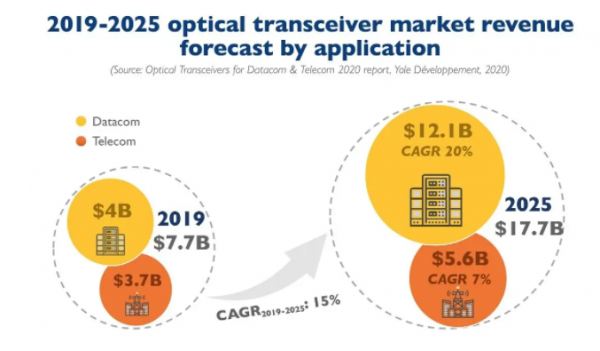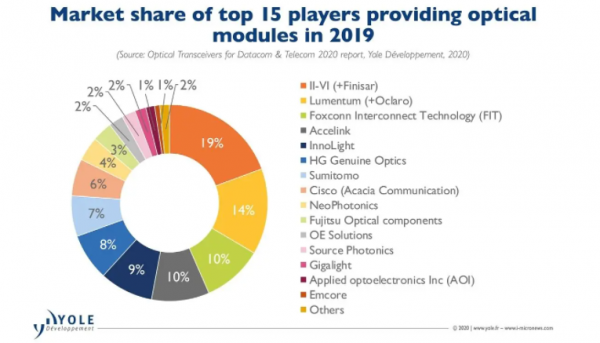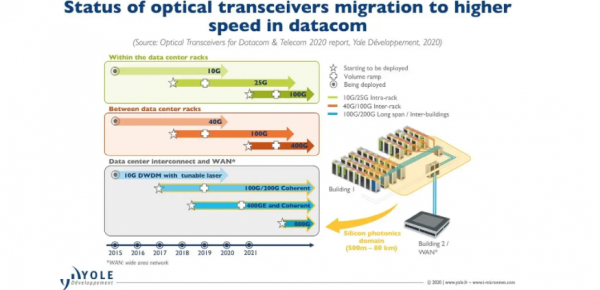“The market size of optical modules reachs approximately USD7.7 billion in 2019, and it is expected to more than double to approximately USD17.7 billion by 2025, with a CAGR(compound annual growth rate) of 15% from 2019 to 2025.” YoleD & Veloppement (Yole) Analyst Martin Vallo said: “This growth has benefited from large-scale cloud service operators beginning to use large amounts of more expensive high-speed (including 400G and 800G) modules. In addition, telecom operators have also increased investment in 5G networks.”

Yole pointed out that from 2019 to 2025, the demand for optical modules from the data communication market will achieve a CAGR(compound annual growth rate) of about 20%. In the telecommunications market, it will achieve a CAGR(compound annual growth rate) of about 5%. In addition, with the impact of the pandemic, total revenue is expected to increase moderately in 2020. In fact, COVID-19 has naturally affected the sales of global optical modules. However, driven by the strategy of 5G deployment and cloud data center development, the demand for optical modules is very strong.

According to Pars Mukish, an analyst at Yole: “In the past 25 years, the development of optical fiber communication technology has made great progress. In the 1990s, the maximum capacity of commercial optical fiber links was only 2.5-10Gb/ s, and now their transmission speed can reach 800Gb/s. Developments over the past decade have made higher-efficiency digital communication systems possible and solved the problem of signal attenuation.”
Yole pointed out that the evolution of multiple technologies has enabled the transmission speed of long-distance and metro networks to reach 400G or even higher. Today’s trend towards 400G rates stems from cloud operators’ demand for data center interconnection. In addition, the exponential growth of communication network capacity and the increasing number of optical ports have had a huge impact on optical module technology. The new form factor design is becoming more and more common, and aims to reduce its size, thereby reducing power consumption. Inside the module, optical devices and integrated circuits are getting closer and closer.

Therefore, silicon photonics may be the key technology for future optical interconnect solutions to cope with the increasing traffic. This technology will play an important role in applications ranging from 500 meters to 80 kilometers. The industry is working to integrate InP lasers directly onto silicon chips to achieve heterogeneous integration. Its advantages are scalable integration and elimination of the cost and complexity of optical packaging.
Dr. Eric Mounier, an analyst at Yole, said: “In addition to increasing the rate through integrated amplifiers, higher data throughput can also be achieved by integrating the most advanced digital signal processing chips, which provide different multi-level modulation technologies, such as PAM4 Or QAM. Another technique to increase the data rate is parallelization or multiplexing.”
Media Contact
Company Name: Anshan Topticom Tele-communication Co.,Ltd.
Contact Person: Media Relations
Email: Send Email
Phone: +86-755-21612318
Country: China
Website: https://www.topticom.com/
